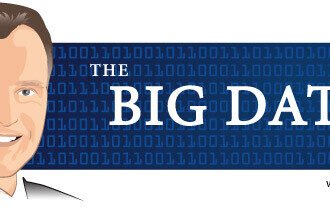Digital transformation is one of the biggest challenges facing enterprises today. In a rapidly changing market, many organizations are struggling to keep up with the pace of business. All too often, companies find themselves facing an extremely complex situation which they’re not sure how to resolve: They need to introduce new digital tools in order to raise productivity and keep their company competitive, but those very tools are undermining productivity among their employees. The attempt at digital transformation leads to so much confusion about how, when, and perhaps even why they should use new digital tools, employees end up turning away from cutting edge apps that would speed up tasks and streamline workflows. Instead, they revert to slow manual processes, or clunky, inadequate software that is neither secure nor effective. What’s more, their negative experience only increases hostility towards innovation and raises resistance to change in the future. All of this is the result of a focus on digital transformation without concern for digital adoption. Digital adoption refers to that nirvana when everybody, managers, employees, and customers alike, is using your digital tools with confidence and to their fullest extent. Digital adoption doesn’t happen overnight. It’s a journey, but like every journey, it begins with a single step. In this case, that first step is visibility.
Why you need to know your employees to reach digital adoption
It’s impossible to address digital adoption if you don’t yet know how your employees feel about your digital tools. Digital adoption rests upon accurate data about how people are using your digital apps and software; whether they feel frustrated or in control, if they are using all the features or just stick to one or two, and if they know about everything that their work apps can do. This last question is extremely important. If your employees don’t even know what their tools can achieve, there’s no way that they’ll be able to use them properly.
How to uncover the truth about your employees and your tools
Just like in any relationship, the best way to find out how the other party feels about something is to simply ask them. However, when it comes to business that’s not always so easy. If you ask your employees directly, they might feel too intimidated to answer honestly. They may feel required to say that everything is fine, even if they’re actually drowning in a sea of technology. It’s also possible that they don’t really know enough about their tools to be able to assess whether or not they’re using them correctly. This leaves you with no choice but to be smart about getting the insights you need. Try using an advanced survey platform like SoGoSurvey, which helps you to construct surveys in a way that produces accurate and reliable results. Here are some of the ways that survey platforms can open up the truth about how, when, and why your employees use your digital tools.
Anonymous responses
You can’t be sure that your employees are replying honestly unless they feel confident that it is safe to do so. As well as reassuring them that you’re looking for their real attitudes towards your tools, you need to use a survey platform that anonymizes all their answers. That has to include making it impossible for you to work out identities from their age, gender, department, or any other question about demographics.
Asking the right questions
Constructing an effective survey is harder than you might think. You need a platform that supports you to ask open-ended questions that encourage considered, thoughtful responses from your employees so that you end up with more than just a string of “don’t know”s in your results.
Control over survey data
Many survey companies act as third parties who conduct your survey offsite, leaving you without any ownership of your own survey data. Survey platforms allow you to maintain control over the structure, process, and results of your survey so that you can manipulate your data any which way you please.
Advanced AI-powered analysis
Survey responses can reveal a lot more than you’ll notice at first glance. Some survey platforms use sentiment analysis and NLP to discover your employees’ deeper concerns and issues, uncovering a lot more valuable information than you would have expected.
Tracking long-term trends
Gaining visibility into your employees’ behaviors and beliefs about your digital tools isn’t a one-off activity. You want to keep on checking up on their experience and opinions at regular intervals, and need to track and analyze the results. The right survey tools enable you to follow real-time patterns in employee responses, create helpful reports, and dig deep into long term trends to find out how your company is progressing on the path to digital adoption
Knowing your employees is the beginning your digital adoption journey
No one wants their company to become a dinosaur that’s made extinct by the new digital climate, so digital adoption is a must-have to ensure that you keep up with the times. Leveraging the right platform enables you to create effective surveys that harvest thoughtful, anonymous responses, retain control over your survey data, and apply AI analysis to uncover deeper trends and track long-term patterns. This gives you the visibility you need to spot the biggest areas for improvement, discover what you’re doing right, and generally find out where your organization lies in the digital adoption journey.











